The trip to Canyon Creek Ice Cave near Bragg Creek was one of my absolute favourite outdoor adventures of 2022, and the cave itself was certainly one of the most unique destinations I got to visit. Located 5 km down an oil and gas access road, Canyon Creek Ice Cave is visible as a large gash extending 494 m deep into the side of Moose Mountain. The cave itself has been formed by the freeze-thaw cycle breaking of chunks of limestone and carrying them away. Sections of the cave are blocked off by permanent ice, though like in many ice caves around the world, it is slowly disappearing.
It used to be possible to drive right up to the base of Moose Mountain where Canyon Creek Ice Cave is located, but in order to discourage unprepared hikers the road was closed off, now requiring one to hike or bike an extra five kilometres each way. It is essential to be prepared for this hike. Bring helmets, headlamps, and water. The scramble up to the entrance to the cave itself is not super difficult, but it is important to stay on the trail and be mindful of hikers below. Numerous accidents have occurred and at least one hiker has died when hikers above knocked loose rocks down accidentally.
Inside the cave, be safe and practice good ethics. The main chamber is wide and spacious, but it is possible to explore some other narrow chambers that branch off. If you get stuck and die, there’s a precedent for the entire cave to be closed off to everyone forever, and you’ll be dead. For the love of God, don’t leave your garbage inside the cave, and don’t use it as a toilet. There is nowhere for those smells to go.
As always, I suggest bringing a plastic bag with you when hiking to help pick up garbage left behind, and if you see people engaging in disrespectful behaviour, let them know that it is unacceptable.
Continue reading this blog post for everything you need to know to experience the Canyon Creek Ice Cave hike in Kananaskis Country for yourself, including distance, elevation gain, how to get there, the best time to visit, and lots of photos of my experience.

Note: The Canyon Creek Ice Cave hike is located in Kananaskis Country, meaning that a valid park pass is required. Day passes can only be purchased online and are per day per vehicle, but if you’re staying six days or longer, it’s more cost-effective to just buy an annual pass instead.
Before visiting Kananaskis Country it’s essential to read up on the Alberta Parks rules that must be followed to avoid tickets and/or fines. Harmful practices that are illegal in Kananaskis Country include disturbing plants or rock-stacking, or removing any natural object from flowers to rocks, as it’s important to leave the environment as natural as possible for the animals and for fellow hikers to enjoy in perpetuity. As many flowers as there are, there are few enough that if we all took one, then there wouldn’t be any left. Take only photos, leave only footprints.
If you haven’t heard of Leave No Trace principles, they’re also really essential to read up on before heading anywhere into the outdoors in general. Following these important principles basically means doing your best to leave beautiful places like Canyon Creek Ice Cave as good (if not better) than you found them, both for their preservation and for the enjoyment of other visitors.
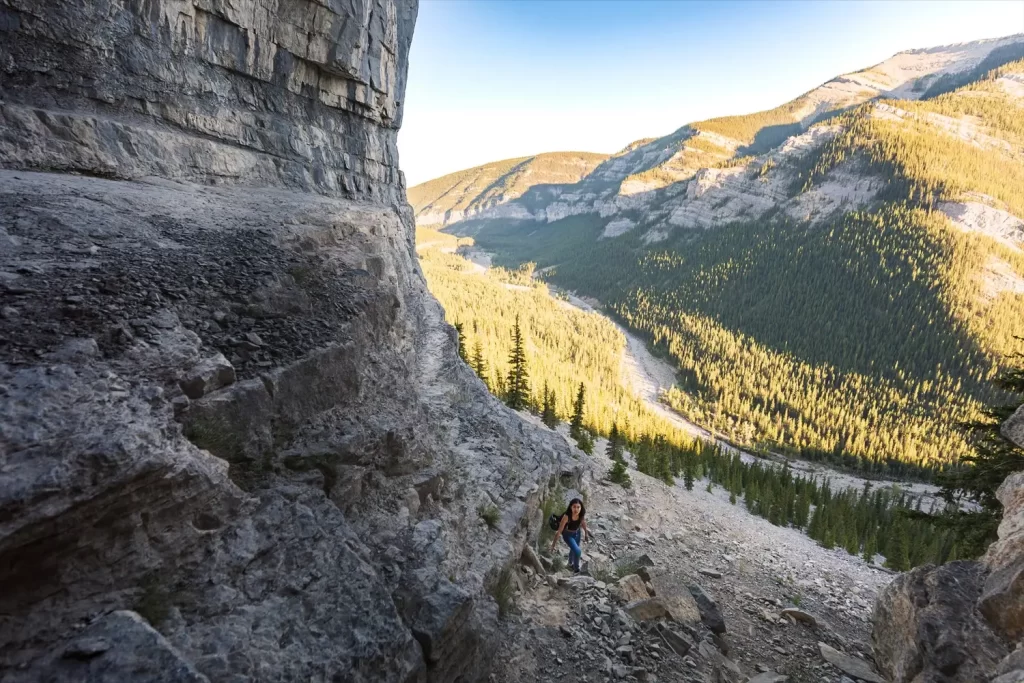
Canyon Creek Ice Cave Round Trip Details
Distance: 15 KM / 9.3 MI
Elevation Gain: 687 M / 2253 FT
Hiking Time: 5 HRS
Hiking & Safety Tips
- Prepare for the possibility of wildlife encounters. Bear spray is a must whenever travelling in bear country, as well as learning how to use it. Though your chance of an aggressive bear encounter is low, it is always better to be prepared with bear spray. Bear bells are proven to be an ineffective bear deterrent, and are actively discouraged by Parks Canada. The best way to let bears know you’re around is simply to use your voice. Make sure to keep a respectful distance from wildlife and never feed the animals. It may seem kind but it doesn’t just kill wildlife and put people in danger, it’s also illegal.
- Research current trail conditions and make sure you are well-informed about the route before you leave, and assess if it is within your capability. Be aware of what time it gets dark and check the weather forecast. Make sure to tell someone where you’re going and when you expect to return. Every year as more and more people try hiking for the first time, the number of rescues goes up. Being prepared is the best defense.
- Pack everything you need for a successful hike, including enough water and energy-rich snacks. Remember to pack out everything you pack in though – don’t expect to find a convenient garbage can halfway up the trail. Bring appropriate layers (remember you’ll warm up once you start hiking) and sun protection. Hiking poles may be helpful but are not required. In addition to not leaving any garbage on the trail yourself, I highly recommend bringing a garbage bag and collecting any trash that you do see on the trail. You’re guaranteed to make the hike to Canyon Creek Ice Cave a more enjoyable experience for the next person.
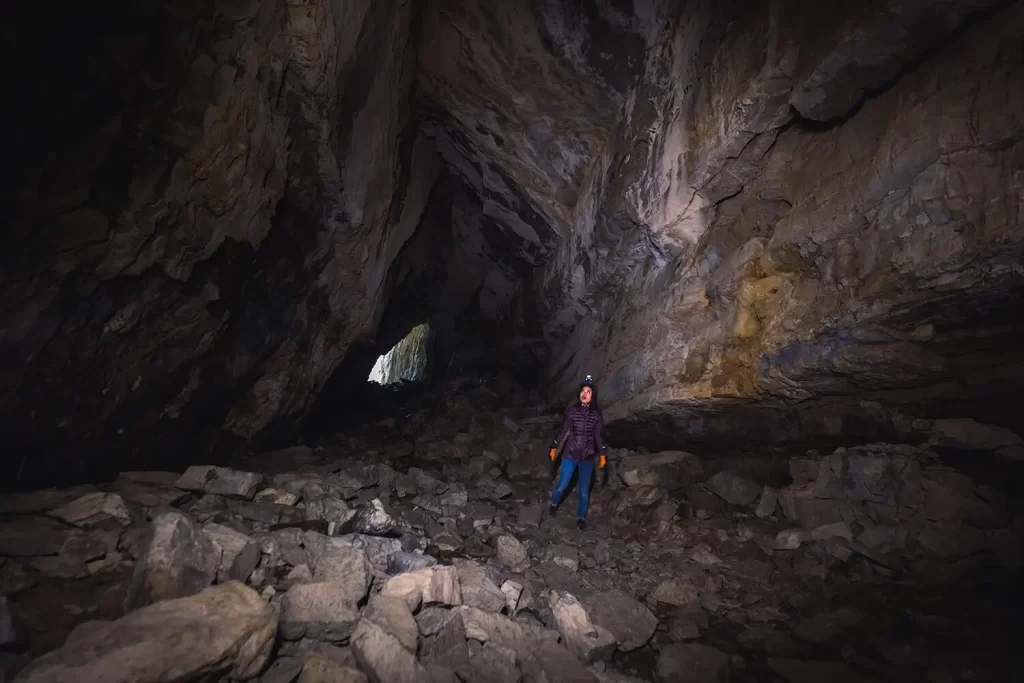
How to Get to Canyon Creek Ice Cave Trailhead
The parking lot for the Canyon Creek Ice Cave is located on gravel Canyon Creek Road just off of Highway 66, fifteen minutes from Bragg Creek. The turn-off is located right after the turn-off for Moose Mountain, but before reaching Elbow Falls. The parking lot is located in Kananaskis Country, so a Kananaskis Conservation Pass is required to park there. The pass can be purchased here.
Click here to open the exact trailhead location in Google Maps.
Hiking to Canyon Creek Ice Cave
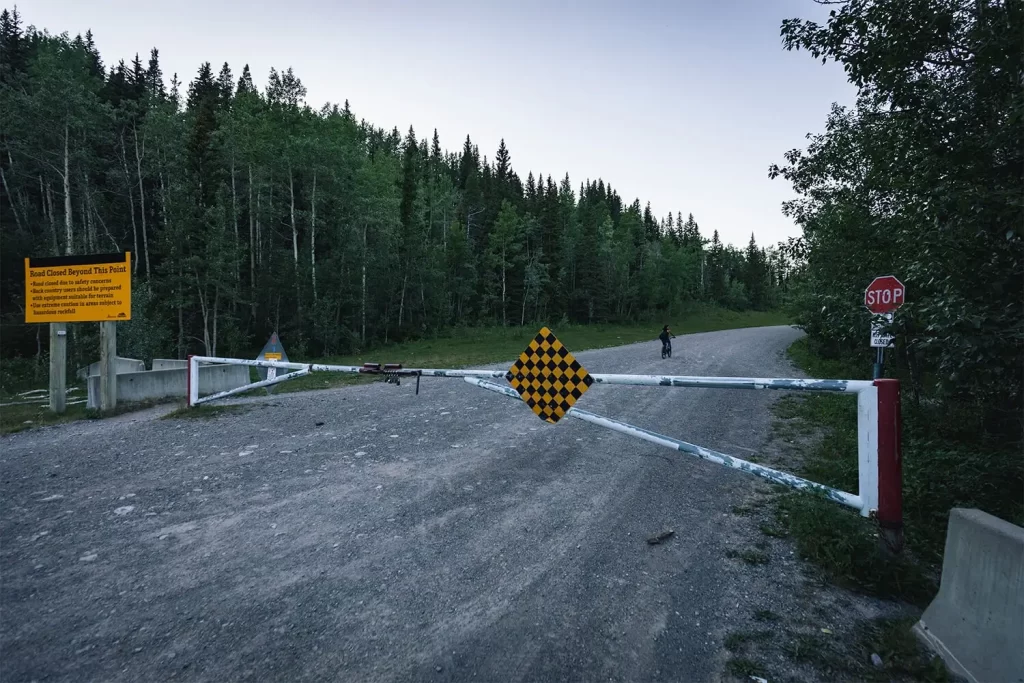
Biking down the 5 km oil and gas access road from the large parking lot. It’s also possible to walk, but expect a much longer day. There is little shade so pack sunscreen.
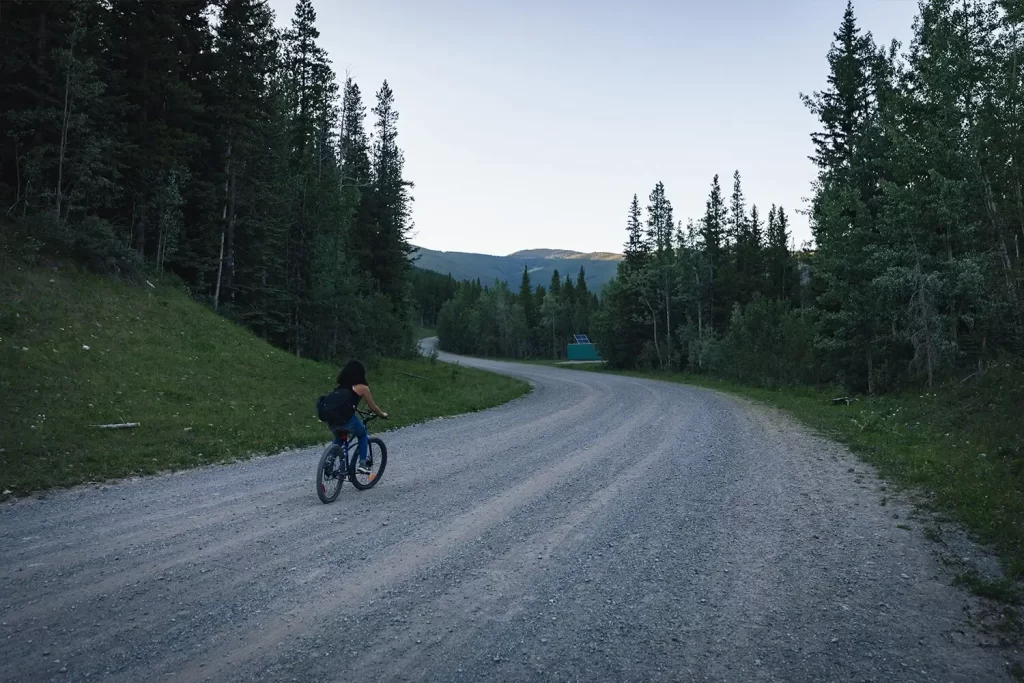
A few industrial buildings along the side of the road.
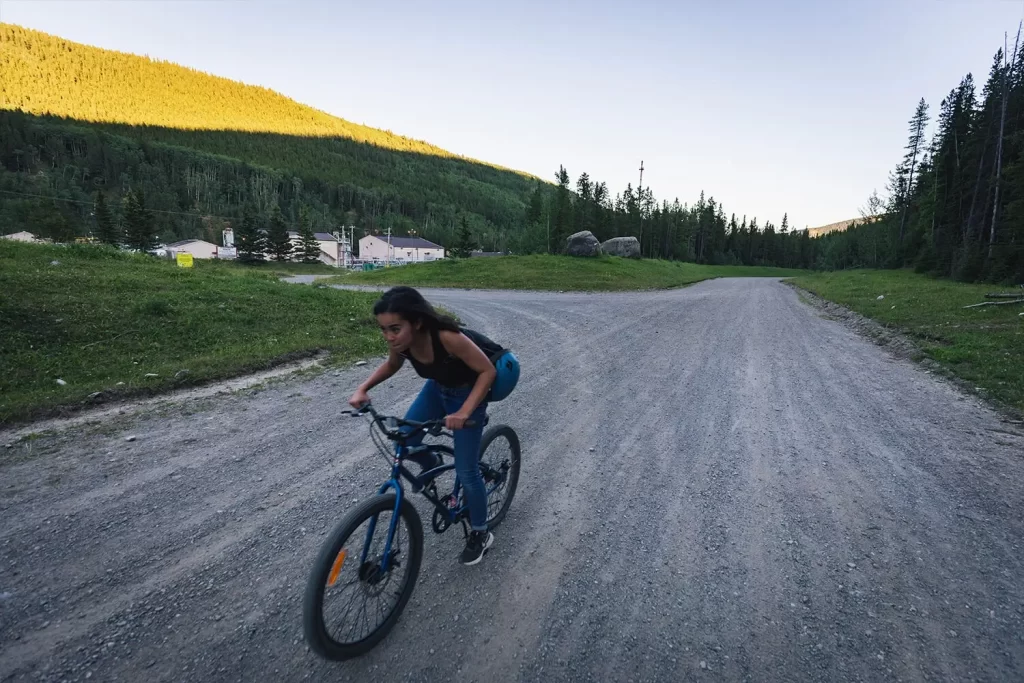
Action shot.

Riding alongside the Creek. Prairie Mountain is on the left.
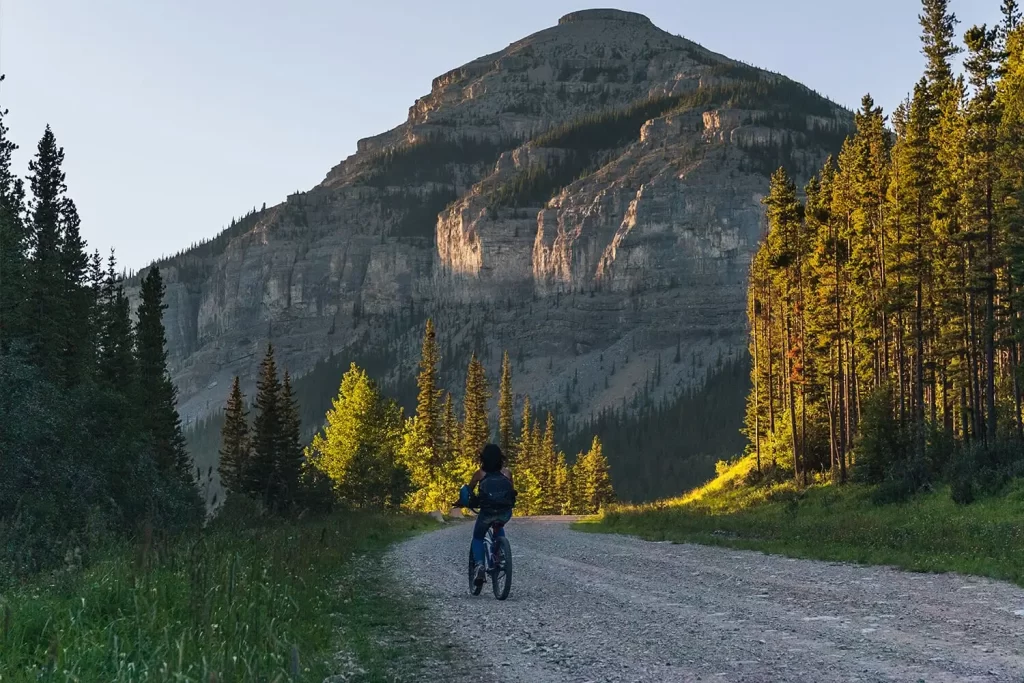
The flat-capped southwestern peak of Moose Mountain appears in the distance with the large gash of Canyon Creek Ice Cave visible at left.
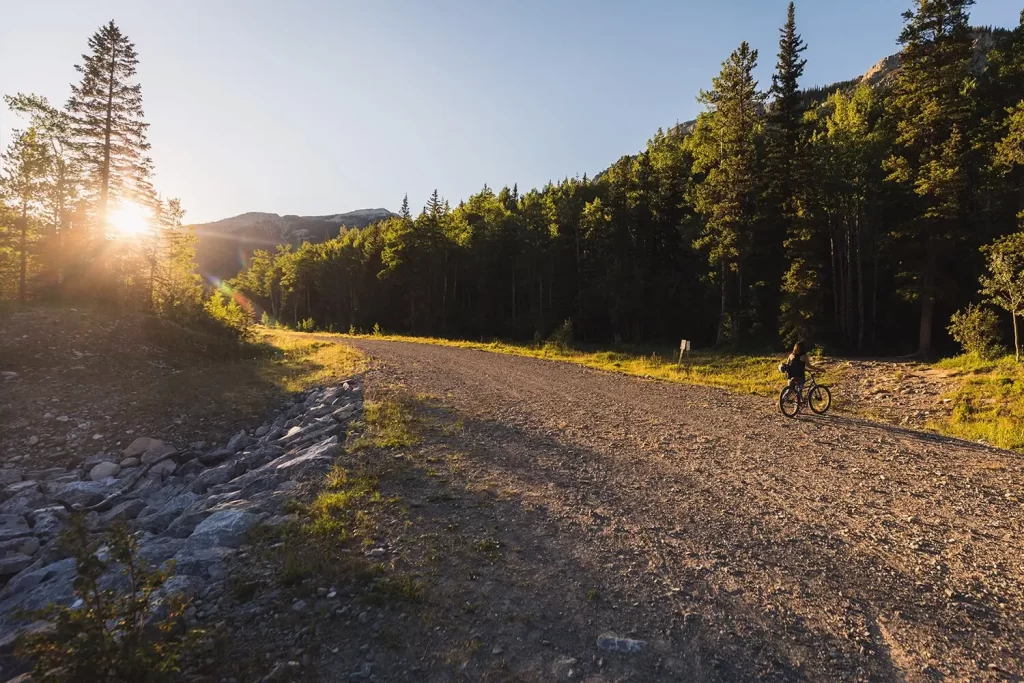
A small turn-off at the end of the road. From here the cave is visible in the mountain up above.
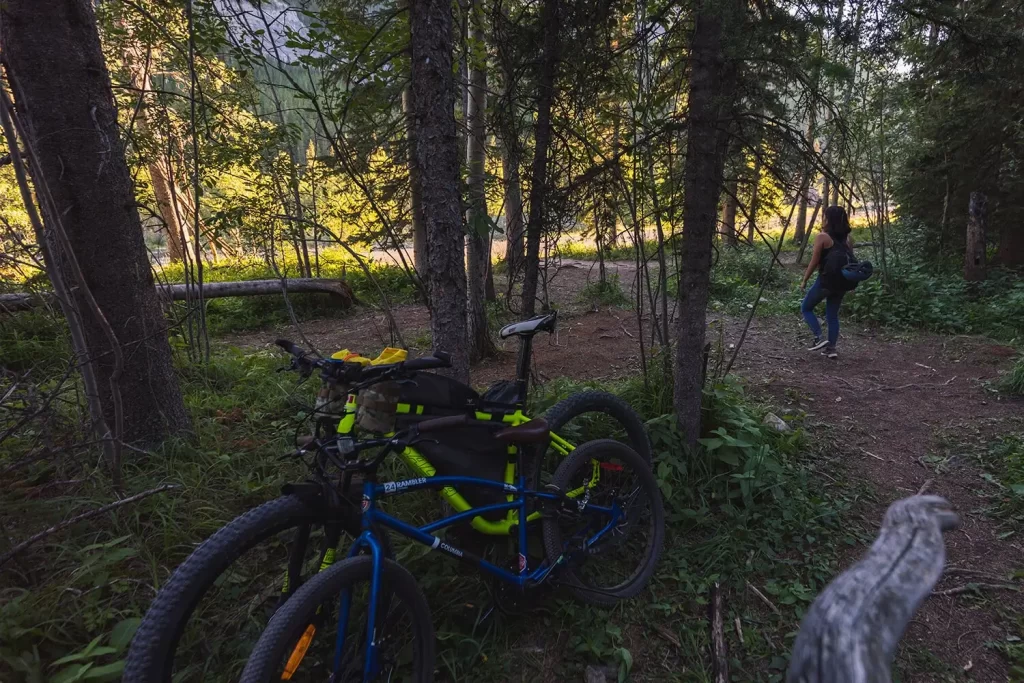
Stashing our bikes and heading up the trail.
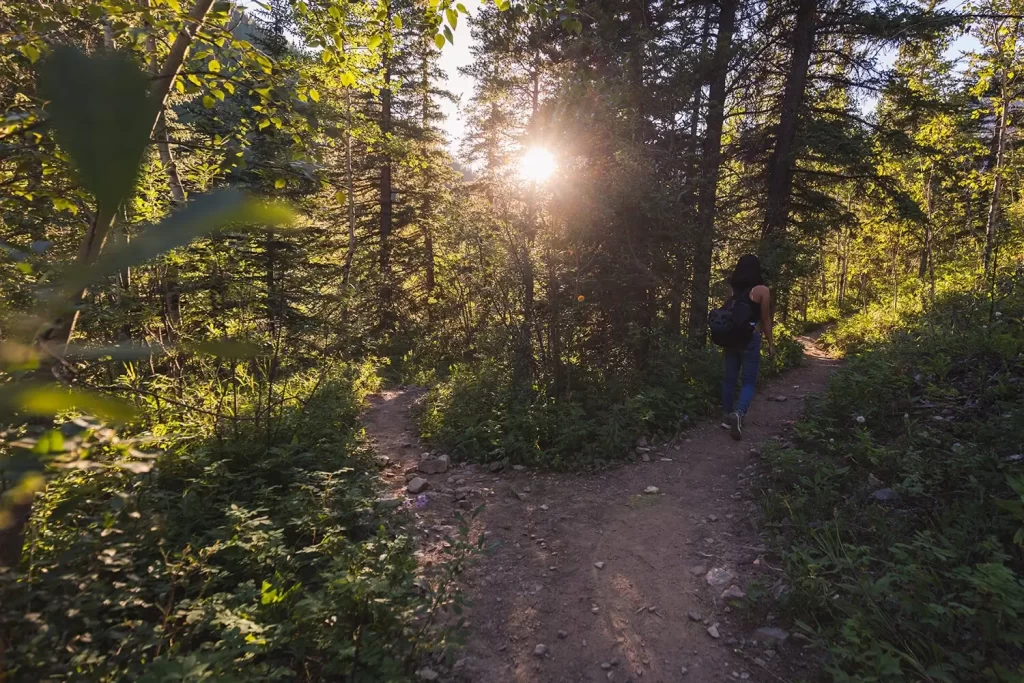
Keeping right to head uphill.
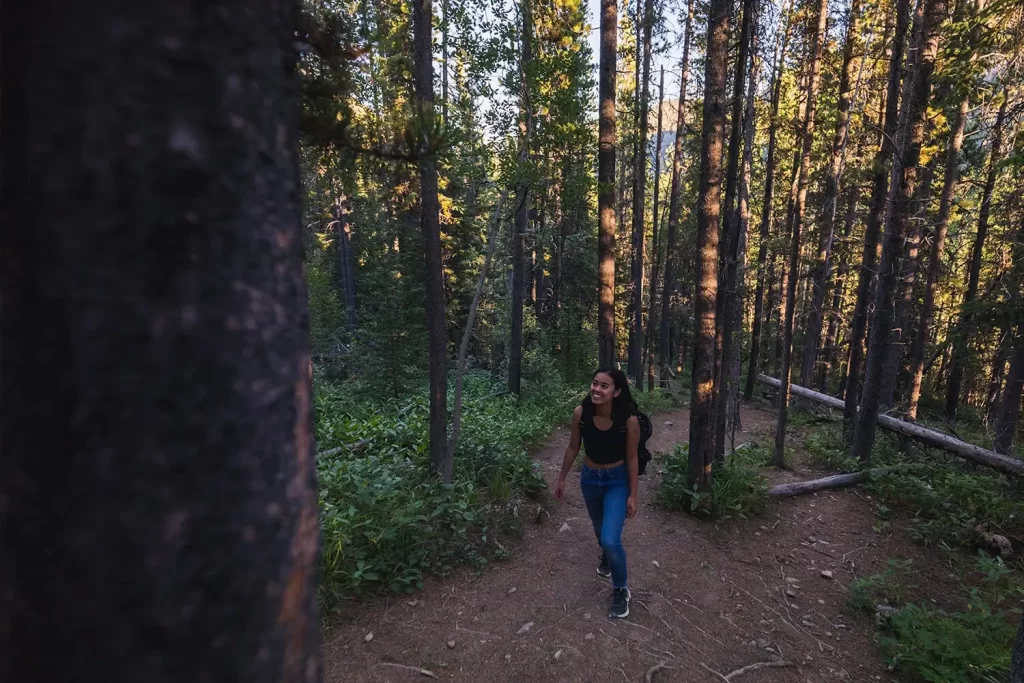

Hiking turns to scrambling here. Be mindful of other hikers below.
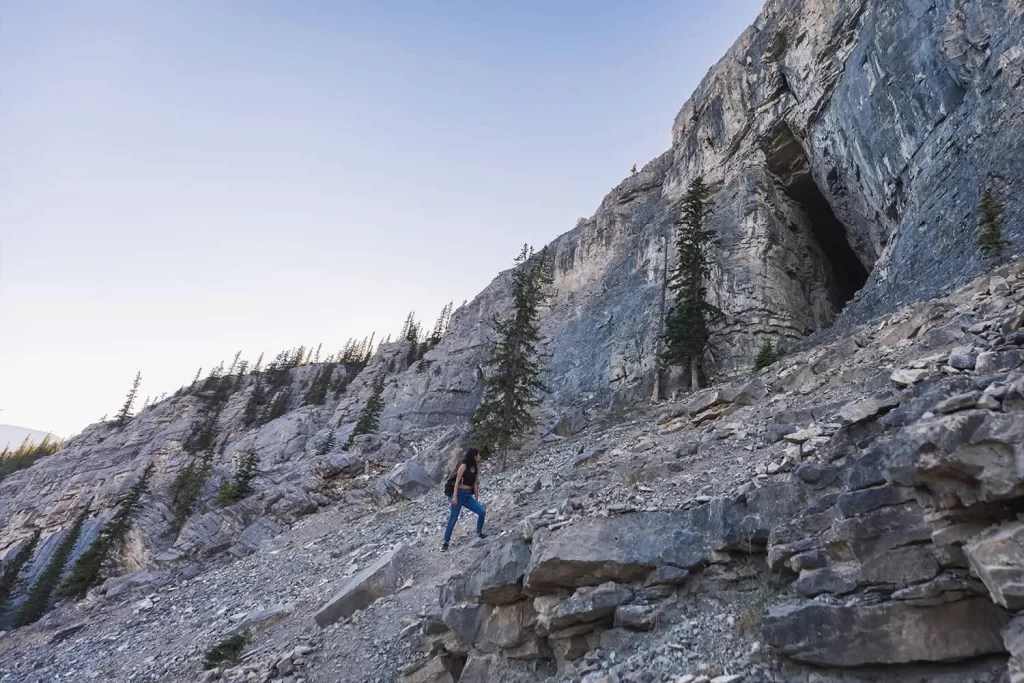
The steep final ascent to the mouth of the cave.

Enjoying the cool air of Canyon Creek Ice Cave; much lower in temperature than the air just outside.

The wide open chamber is full of loose rocks, so step carefully.
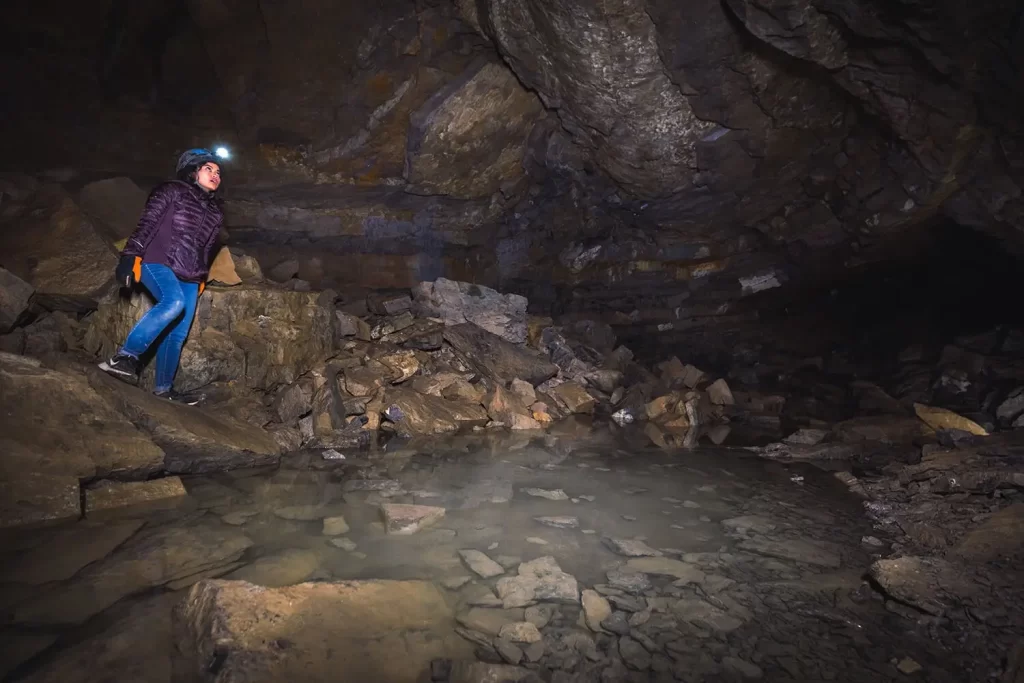
A couple pools of water are fed by a million drips from the ceiling.
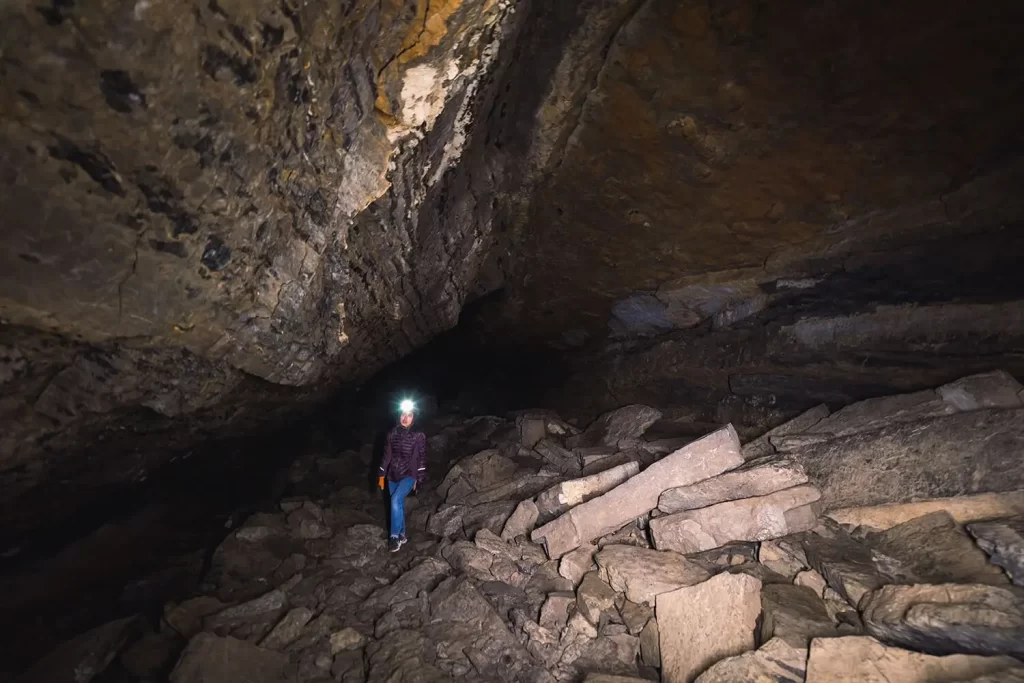
The cave starts to narrow as we get further back. Shell and coral fossils are visible in the ceiling here, though I forgot to photograph some.

The permanent ice. Who knows how long it has been here. We chose not to touch it to help preserve it for future visitors. This is where most people turn back, though it is possible for those with some experience to continue down some smaller chambers.
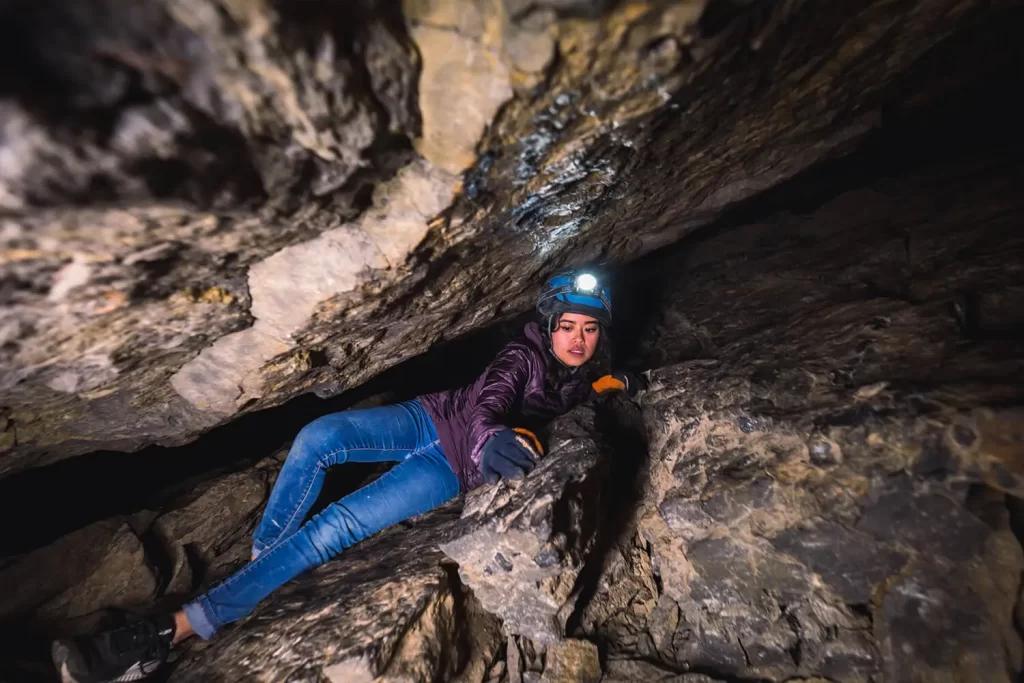
Exploring some tighter sections branching off from the main cavern.
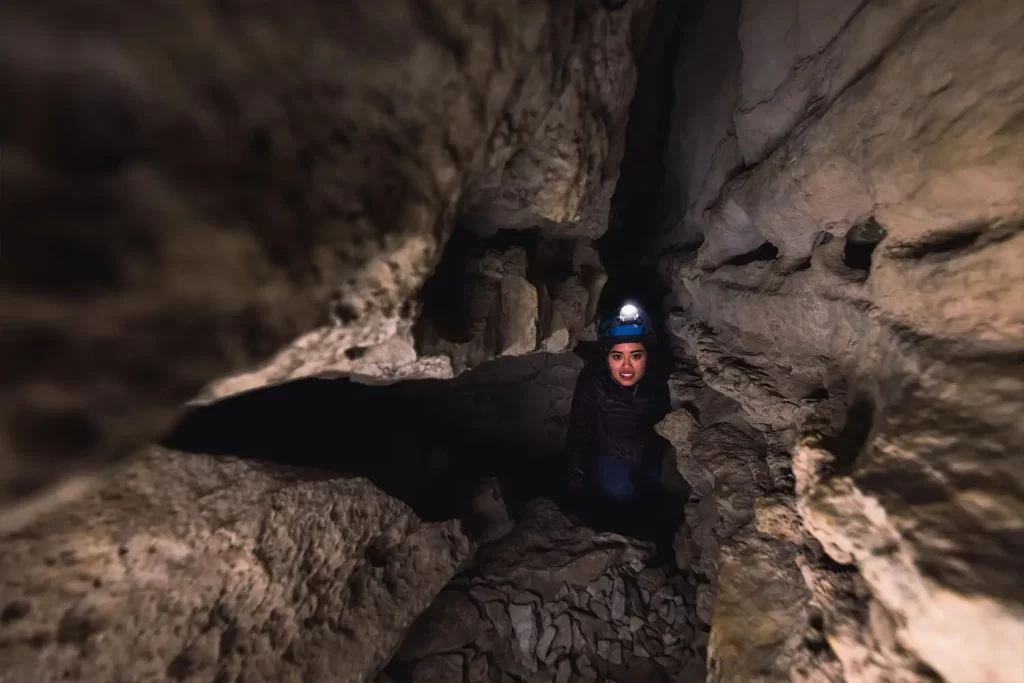
Eventually it got too tight for me, but Kate was able to continue.
Recommended Hiking Gear



Water is a must whenever I’m hiking, especially if the sun is going to be out. My favourite water filter I’ve used is the Katadyn BeFree 0.6L, which unlike other water filters I’ve used packs up really small and lightweight. For hikes where I know there won’t be any readily available water sources along the way, I make sure to bring my own. The Hydrapak Stow 1L bottle is my go-to, for the same reason that it’s made of a soft plastic that folds up and doesn’t take up any more extra space than necessary in my pack. Finally, Aquatabs are another great option for purifying water, with one tablet being suitable for one litre of water. I previously used the Grayl water filter while travelling internationally, and though I found its hard body more convenient for day to day use and easier to drink from, it has a little too much bulk for my fast-and-light style of hiking.



The secret to all my photos of gorgeous sunset and sunrise mountaintop views? A lot of hiking in the dark. And let me speak from personal experience when I say that the last thing that you want to happen when hiking is to be caught in the dark without a headlamp. I used the Black Diamond Spot 400 for years and it worked great – until I lost it on top of a mountain somewhere. The only downside to it was having to worry about the batteries dying, though there’s also a slightly more expensive version that has a rechargeable battery. Nowadays I’m using the Petzl Actik Core, which is a bit pricier than the more budget-friendly Black Diamond, but is also brighter, more comfortable (in my opinion), and has a hybrid power system that is rechargeable but can also take AAA batteries if needed.
You won’t see me using trekking poles on shorter hikes often – but on long hikes and backpacking trips, as well as certain scrambles, they are an absolute lifesaver. I’ve invested in a high quality ultra-lightweight pair of MSR DynaLock Ascent carbon poles which, while pricey, I don’t regret one bit. If you’re not entirely sure how much use you’re going to get out of a pair of trekking poles, the best budget-friendly option would be the Trekology Trek Z 2.0. Amazon does sell a lot of cheaper Made in China-style trekking poles for cheaper, but these usually are much much heavier and not worth buying.
All the best and most long-lasting cables and power banks I’ve ever owned have been Anker. I once had a phone cable from them that lasted me over three years of daily use! That’s why I keep an Anker PowerCore Essential 20K power bank on me. Like many people I use my phone for a lot of stuff when hiking (checking in with family, using online maps, taking photos, flying my drone) so I like to be prepared for that low battery warning by having a backup power source on me just in case.



The only socks I ever buy for myself are from Darn Tough, and I almost always make sure to wear them when hiking. After years of having no problems only wearing these comfortable and rugged socks for hikes, I accidentally wore a pair of no-name socks on a hike last year and ended up with blisters on both feet. Safe to say I’m back to sticking with the Darn Tough. And the best part? They have a lifetime guarantee, meaning that if they ever wear out you can send them back for a brand new pair. For hiking footwear I go between a pair of lightweight approach shoes for quick and dirty mountain ascents or anything involving scrambling and more heavy-duty boots for longer treks. I’ve worn a couple different versions of the lightweight but super durable Arc’teryx Konseal FL 2 approach shoes for a few years now and am very impressed with the durability. I also really like the thick toecap that keeps me protected every time I stumble into a root or large rock. For longer, tougher, or muddier treks I rely on my LOWA Camino EVO GTX, which I find insanely comfortable and made of very high quality.



I wear my Ar’teryx Gamma Lightweight Pants on every single hike I go on, and on many days when I’m not hiking. After several years of abuse they are still holding together extraordinarily well, with only a few small holes from where I’ve fallen down and some slight stains from being repeatedly coated with mud. They’re lightweight, breathable, and super comfortable. For lightweight and breathable hiking tops I’m a big fan of both the Patagonia Capilene Shirt and the MEC Core Shirt. My Arc’teryx Squamish Hoody shows up in a lot of my photos. It’s super lightweight and packable, and does a great job of cutting the wind while also being pretty breathable. I also have an Arc’teryx Atom Hoody and Arc’teryx Beta LT that I pull out for cooler or wetter conditions.
I hope you enjoyed this guide to hiking to Canyon Creek Ice Cave in Kananaskis Country! Feel free to leave any questions in the comment section below or to contact me directly via social media.
